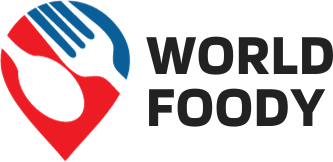Moroccan Cuisine
Morocco, situated in North Africa with a population of nearly 32 million, is an ethnically diverse country with a rich culture and civilisation.
Moroccan cuisine is an extremely diverse cuisine, as a consequence of its interaction with the outside world. It is a mix of Berber, Spanish, Corsican, Portuguese, Moorish, Middle Eastern, Mediterranean, and African cuisines.
Moroccan cuisine is a wonderful blend of spices, condiments and herbs with fresh ingredients making it a mouth watering delight. Cumin, coriander, saffron, chilies, dried ginger, cinnamon, and paprika are the chief ingredients. Harissa, a very spicy paste is a common ingredient in Moroccan meals. Meat staples of Morocco include fish, lamb, and fowl (including pigeon) are considered to be a delicacy. Lamb and fish can be grilled, stewed, or cooked in earthenware Tagine (the name for both the pot and the dish, a circular base pot with a triangular tapering lid). Lemons preserved in a salt-lemon juice mixture add to the flavour of Moroccan chicken and pigeon dishes. Nuts are essential and pine nuts, almonds, pistachios are some examples.
Classic Moroccan Meal
A traditional Moroccan meal begins with hot or cold salads that include vegetables like carrots, zucchini and cauliflowers, followed by Tagine. Bread is a necessary accompaniment to every meal. Olives are used as much as butter in a Moroccan meal; they are usually served with a flat, round, focaccia-like Arab bread.
Breakfast
Moroccans eat a variety of food for breakfast (both western and European). A traditional Moroccan breakfast includes Baghrir (pancake made with yeast), Malwi or Rghayif (dough folded with either butter or oil). However, the most popular breakfast is contemporary and includes toasted bread, jam, breakfast cereal, cheese, tea or coffee.
Lunch & Dinner
Lunch is the most essential meal of the day for the Moroccans with an exception of the holy month of Ramadan. Moroccan lunches are large and filling. The traditional Moroccan lunch commences with a soup (Harira- A combination of meat, chicken, fish or vegetables) or salad, followed by a main course of Tagine or Couscous. Couscous is considered to be an iconic food in Northern Africa; it is used to prepare traditional Moroccan meals using either fish or lamb.
Traditionally desserts were in abundance in Morocco. Fresh fruits or a cup of sweet mint tea is a traditional ending to the meal. However, modern Moroccan meals are often consumed without any dessert.
A traditional Moroccan dinner is a grand affair. It offers a variety of flavours that are exceedingly tempting! Exotic and spicy foods, such as Couscous and lamb kebabs will make your mouth water. Beef is the most commonly eaten red meat in Morocco. Lamb is preferred, but is not as common due to its cost. Poultry was previously used and seafood has seen a recent increase in Moroccan food.
Dessert
Trivia
- Pastilla or B’stilla is the national dish of the country. It is a sweet and flaky pastry filled with a slight mixture of onion, pigeon (or chicken), hard-boiled eggs and almonds, sprinkled with cinnamon and sugar. It is a festive dish that is served at the beginning of special meals.
- It is very common for Moroccans to eat using their fingers, and use bread as utensil
